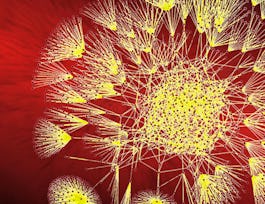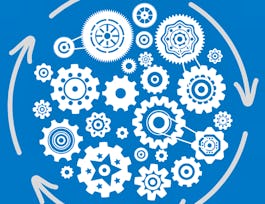This course covers two of the most popular open source platforms for MLOps (Machine Learning Operations): MLflow and Hugging Face. We’ll go through the foundations on what it takes to get started in these platforms with basic model and dataset operations. You will start with MLflow using projects and models with its powerful tracking system and you will learn how to interact with these registered models from MLflow with full lifecycle examples. Then, you will explore Hugging Face repositories so that you can store datasets, models, and create live interactive demos.



MLOps Tools: MLflow and Hugging Face
This course is part of MLOps | Machine Learning Operations Specialization


Instructors: Noah Gift
Sponsored by Barbados NTI
8,437 already enrolled
(41 reviews)
Recommended experience
What you'll learn
Create new MLflow projects to create and register models.
Use Hugging Face models and datasets to build your own APIs.
Package and deploy Hugging Face to the Cloud using automation.
Details to know

Add to your LinkedIn profile
10 assignments
See how employees at top companies are mastering in-demand skills

Build your subject-matter expertise
- Learn new concepts from industry experts
- Gain a foundational understanding of a subject or tool
- Develop job-relevant skills with hands-on projects
- Earn a shareable career certificate


Earn a career certificate
Add this credential to your LinkedIn profile, resume, or CV
Share it on social media and in your performance review

There are 4 modules in this course
In this module, you will learn what MLflow is and how to use it. You’ll install MLflow and perform basic operations like registering runs, models, and artifacts. Then, you’ll create an MLflow project for reproducible results. Finally, you’ll understand how to use a registry with MLflow models and reference artifacts from the API.
What's included
13 videos12 readings3 assignments2 discussion prompts1 ungraded lab
In this module, you will learn the basics of the Hugging Face platform. You will use some of its features like its repositories so that you can store models and datasets. Finally, you will learn how to add and use models and datasets using Hugging Face APIs as well as the web interface.
What's included
14 videos9 readings1 assignment1 ungraded lab
In this module, you will learn how to containerize Hugging Face models and use the FastAPI framework to serve the model with an interactive HTTP API endpoint. Once you understand how to put everything together, you’ll use automation for speed and reproducibility. Finally, you’ll use Azure and Docker Hub to store the containers so that they can be used later for deployments.
What's included
13 videos9 readings3 assignments1 ungraded lab
In this module, you will learn how to fine-tune Hugging Face models by using pre-existing models and then modifying (fine-tuning) them with additional data. You’ll also use Azure to deploy the container and learn how to troubleshoot it. Finally, you’ll also see how to deploy a model to Hugging Face spaces.
What's included
17 videos10 readings3 assignments5 ungraded labs
Offered by
Why people choose Coursera for their career




Learner reviews
41 reviews
- 5 stars
39.02%
- 4 stars
24.39%
- 3 stars
14.63%
- 2 stars
9.75%
- 1 star
12.19%
Showing 3 of 41
Reviewed on Aug 21, 2024
Great learning resources that will be useful long after completing the course, concise presentations, and clear explanations of all topics
Recommended if you're interested in Data Science

University of California San Diego

Duke University

Open new doors with Coursera Plus
Unlimited access to 10,000+ world-class courses, hands-on projects, and job-ready certificate programs - all included in your subscription
Advance your career with an online degree
Earn a degree from world-class universities - 100% online
Join over 3,400 global companies that choose Coursera for Business
Upskill your employees to excel in the digital economy




